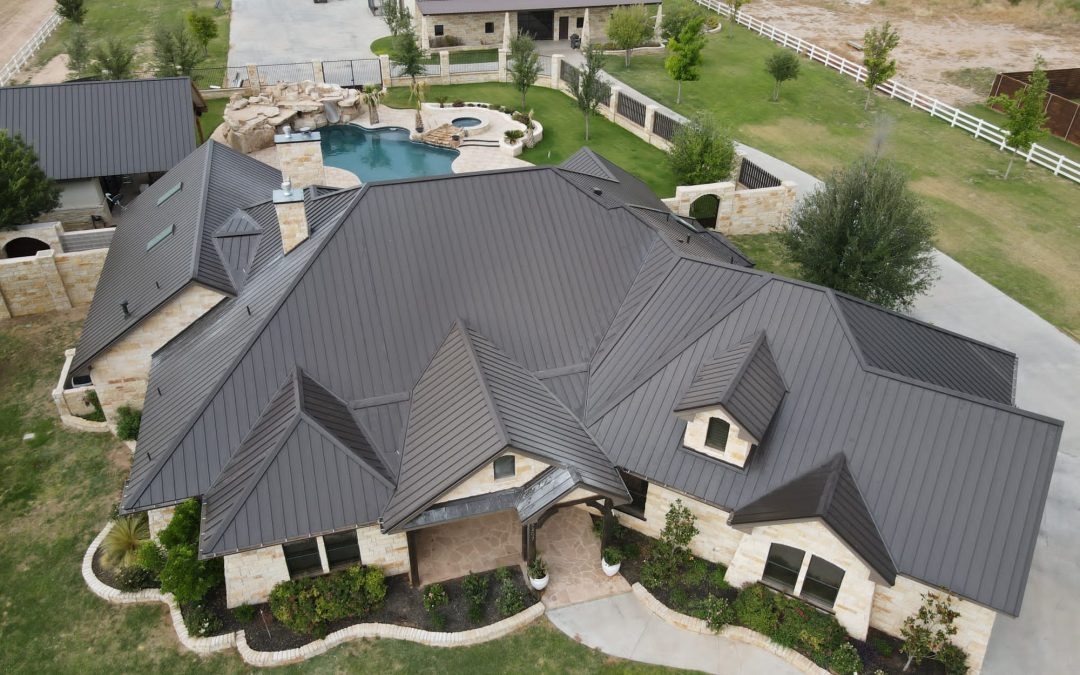Want a shingle roof that not only shields your home from the elements but also complements its aesthetics? Choosing the correct roofing material is vital to ensure it can endure the challenges posed by your specific climate conditions.
In this comprehensive guide, we will explore the significance of roofing materials and how climate influences the choice of materials. We will also provide an overview of the best roofing materials for various climates.
Whether your region is known for thunderstorms or perpetual sunshine, your home’s roof will remain in impeccable condition.
Why Roofing Material Matters?
Different roofing materials offer varying resistance levels to climate challenges, such as wind and temperature fluctuations. For instance, asphalt shingles are excellent for areas with moderate climates, while metal roofing excels in regions prone to severe weather like hail or heavy snow. By selecting the right shingles, you can also increase the lifespan of your roof.
To make the right decision for your home, focus on these key climate considerations:
Area Temperature
Extreme heat or cold temperatures can affect roofing materials differently. For example, some materials expand or contract significantly, leading to wear and tear.
Natural Disasters
Assess the likelihood of natural disasters in your area, such as floods, hurricanes, forest fires, and tornadoes. Some roofing materials are more resilient and can withstand the impact of such events better than others.
Amount of Sunshine
Evaluate the amount of sunlight your region receives. Prolonged exposure to strong sunlight can lead to fading and deterioration of certain roofing materials.
Wind Speed and Direction
Take note of the average wind speed and direction. High winds can exert substantial force on your roof, potentially damaging less sturdy materials. The direction of prevailing winds can also influence the choice of roofing materials to ensure they can withstand wind pressure.
Local Geography
Being close to the coast exposes your home to saltwater and humidity, which can corrode certain roofing materials. Most mountainous regions experience heavy snowfall, requiring materials that can handle the weight.
Types of Roofing Materials
After establishing why roofing materials matter and how climate plays a significant role, let’s explore various roofing materials and their suitability for different climates.
Asphalt Shingles
Ideal for Mild Climates
Asphalt shingles are a tried-and-true option for homeowners in regions with mild climates. They offer a cost-effective and attractive choice while providing insulation and protection. With proper maintenance, these shingles can serve you well for up to 30 years.
Wood Shingles and Shakes
Ideal for Mild to Cool Climates
Wood shingles and shakes present a charming and rustic roofing solution for homes in mild to cool climates. These materials are available in cedar, redwood, cypress, and pressure-treated pine, offering a natural and timeless aesthetic. Some wood types have natural oils that make them resistant to moisture and insects, enhancing their durability.
While wood shingles require regular maintenance to protect against rot and mildew, they can last five to ten years longer than their asphalt counterparts. Their excellent insulation properties also contribute to energy efficiency in your home.
Metal Roofing
Ideal for Hot and Stormy Climates
Metal roofing is a top choice for hot and storm-prone climates, as these roofs are known for their exceptional durability and environmental friendliness. They can withstand the scorching heat of hot climates while reflecting solar radiant heat to keep your home cooler.
Furthermore, metal roofs are well-equipped to endure storms, making them a reliable option for areas prone to hurricanes and turbulent weather conditions. However, the upfront cost of metal roofing can be higher than traditional materials. Its remarkable lifespan of 50 to 100 years makes it a worthwhile investment in regions with extreme weather.
Clay and Concrete Roof Tiles
Ideal for Hot and Stormy Climates
In regions characterized by hot and stormy weather, clay and concrete tiles are the best roofing materials. Their substantial weight requires additional framing support, but their exceptional beauty and resilience compensate for this. These tiles can withstand the toughest natural disasters, including hurricanes, making them ideal for storm-prone areas.
With a lifespan of over 50 years and recyclable properties, clay and concrete tiles are an eco-friendly choice for homeowners in such climates. The light color of these tiles also reflects sunlight, assisting in temperature control within your home.
Slate Roofing
Ideal for Cool Climates
Cool climates benefit from the enduring qualities of slate roofing. This “lifetime” roof is known for its extraordinary longevity and minimal maintenance requirements. Slate roofs are impervious to freezing and thawing cycles, making them an excellent choice for regions with cool weather patterns.
They are durable and environmentally friendly, with a low manufacturing impact. Slate roofing is ideal for homeowners seeking a long-term solution to protect their homes from the challenges of cool climates.
Shingles to Avoid Based on Climate
While it’s essential to know which shingles are suitable for your climate, it’s equally important to identify materials that must be avoided:
Wood Shingles in Hot Climates
Wood shingles can warp, crack, or become brittle in hot and arid climates due to excessive heat and sun exposure. Therefore, they are not the best choice to use in the hot and humid conditions.
Clay Tiles in Freeze-Prone Areas
Clay tiles can crack in freezing temperatures, making them a less-than-ideal option for regions with cold winters. Constant exposure to frost and ice can damage these shingles over time.
Wrapping Up
Choosing the right shingle roof for your climate can significantly impact the longevity, durability, and performance of your home’s roofing system. Due to this reason, you must consider various climate factors to determine the ideal roofing materials.
By carefully considering climate considerations like wind, sunshine, and local geography, you can select roofing materials that maintain aesthetic appeal while enduring the challenges of your region. A well-matched shingle roof not only shields your home but also enhances its overall beauty.
